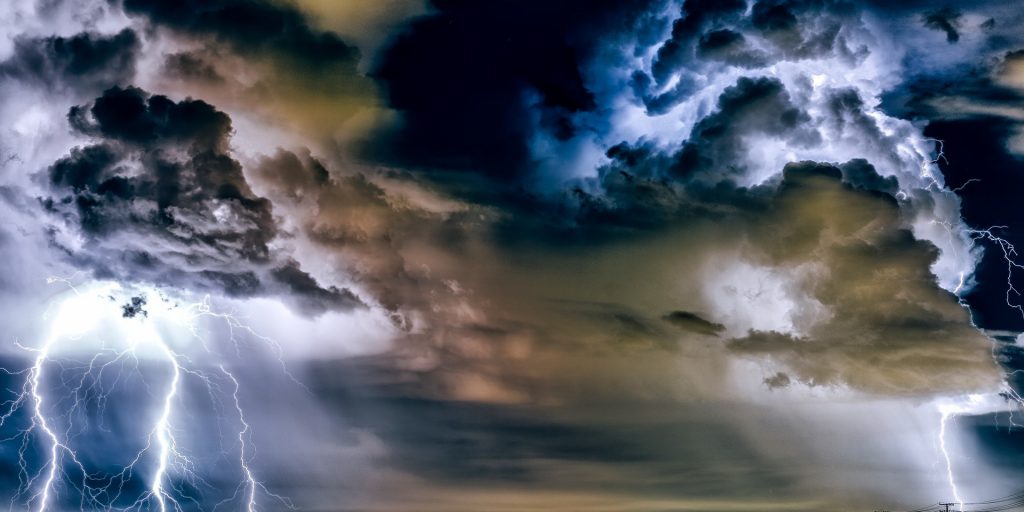Satellite IoT brings calm before and after the storm
According to the World Meteorological Association, the number of natural disasters has increased five times over the last 50 years, mainly driven by climate change and extreme weather. However, improved early warnings and disaster management strategies have led to a decrease in the number of disaster related deaths by almost three-fold.
The National Oceanic & Atmospheric Administration (NOAA) is forecasting between 14 to 21 named storm systems this year, and hurricanes are just one example of a disaster that can uproot a community and cause massive destruction. For regional/local emergency managers, the time to start preparing for disaster begins way before a daunting forecast is even on the radar. According to FEMA, there are four phases of emergency management in relation to natural disasters: mitigation, preparedness, response and recovery. Fortunately, all four phases can be managed with the right technology: satellite IoT.
Mitigation and preparedness
The first phase, mitigation, includes actions taken to prevent or reduce the cause, impact and consequences of disasters. After, the preparedness phase begins. This phase includes planning and training for events that cannot be mitigated. Arguably, these are the most important steps to disaster prevention and recovery because it begins before the storm.
When preparing for disaster, it’s important to zoom out and look at the bigger picture. First, there is a need for visibility into assets and operations, and there is a need for communication in case of emergency—satellite technology can be leveraged for both.
Asset trackers are devices that utilize satellite IoT to manage and provide visibility into the status of any physical assets. Before the storm begins, ensure all assets can be tracked—this will also make the last phase of recovery much easier. Additionally, first responders need to be prepared to communicate in the event of a blackout. Where cellular networks fall short, satellite networks provide constant connectivity to ensure visibility and communication still occurs. If first responders have the tools they need to communicate and locate, they are already ahead in terms of preparation.
Response and recovery
Although severe weather and storms tend to create an atmosphere of panic, a smooth transition from the preparedness phase to the response phase will keep the plan in action. Clear steps and objectives offer some stability in a time of chaos.
The response phase occurs in the immediate aftermath of a disaster, which can differ in length depending on the level of preparedness. During the response phase, business and other operations do not function normally. One of the first things to be affected during a natural disaster are power and traditional cellular networks. As mentioned, satellite networks offer constant connectivity even in these cases. While working through the response, dependable connectivity can provide some comfort in the commotion.
During the recovery period, restoration efforts occur concurrently with regular operations and activities. The recovery period from a disaster can be prolonged depending on how well you were prepared before the event. To ensure a quicker and more efficient recovery, protect your valuables with a satellite IoT asset tracker. These devices function by connecting to the satellite network and providing up-to-date location data. In case an asset is displaced after disaster, asset trackers can aid in the recovery process. Assets are even more precious for local governments, who tend to have less resources than their federal counterparts.
Better visibility, better outcomes
For disaster management, the more prepared emergency managers are, the more resilient your locality will be in the face of disaster. However, it’s impossible to accurately predict and manage storms completely. Utilizing satellite technology will provide better visibility into assets, allowing for more control over a seemingly uncontrollable situation.
By tapping into the satellite networks with IoT technology, you can be provided with up-to-date location information even when the power is out. These small bursts of data are ideal for reliable coverage but use little power.
By creating and implementing a strong four phase plan and using technology to your advantage, natural disasters can be effectively managed. In 2022 alone, there have been nine weather/climate disaster events with losses exceeding $1 billion each to affect the United States. These events had significant economic effects on the areas impacted. Localities have a lot to lose in the face of disaster; don’t wait until it’s too late.
Claudia Smith is a 15-year technology and satellite industry expert and regional business development manager at Globalstar. She utilizes customizable satellite commercial IoT solutions to ensure resilient connectivity for disasters, business continuity, communications beyond cellular capacity and worker safety.

















